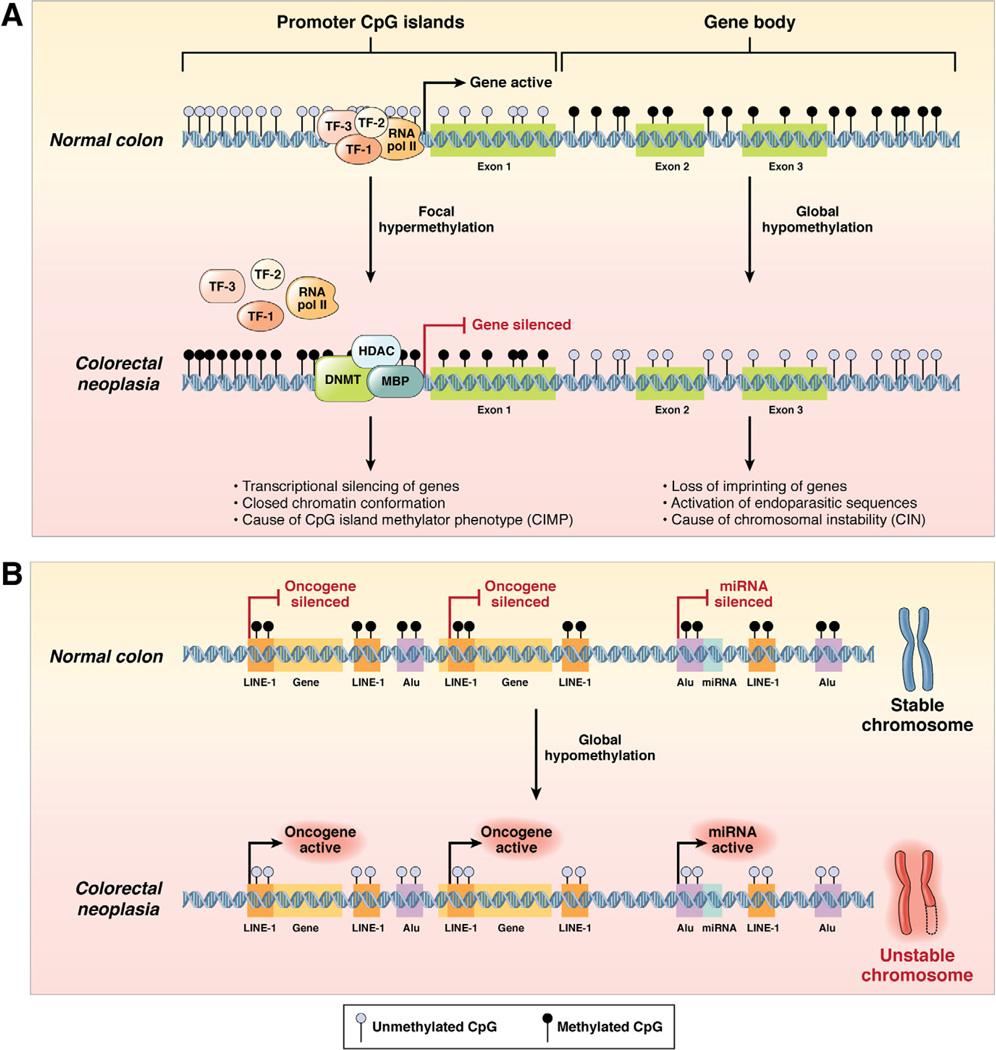Figure 1.
DNA methylation patterns in the normal colon and colorectal neoplasia. (A) The process of DNA hypermethylation-induced transcriptional silencing of tumor suppressor genes in colorectal neoplasia vis-à-vis normal colonic cells. In this instance, altered DNA methylation occurs at CpG dinucleotides either in the context of CpG-rich “promoter CpG islands” or at the abundant but sparsely distributed CpG sites throughout the “gene body.” In normal cells, CpG sites within the 5′ promoter CpG islands upstream of the transcription start site of a tumor suppressor gene are generally unmethylated (blue circles), whereas the dinucleotide repeats within the gene body are frequently methylated (black circles). This configuration permits easy and uninterrupted access by transcription factors (eg, TF-1, TF-2, TF-3) and RNA polymerase II (RNA pol II) to bind to the gene promoter and facilitate active gene expression. In contrast, in colorectal neoplasia, DNMT in association with HDAC and methyl binding proteins (MBP) catalyze the transfer of methyl groups to cytosines in the promoter CpG sites, resulting in the hypermethylation-induced transcriptional silencing of the associated tumor suppressor gene, which reflects CIMP. Concurrent with hypermethylation of gene promoters, CpG sites within the gene body experience DNA hypomethylation, which causes loss of imprinting of genes, activation of endoparasitic sequences, and chromosomal instability in CRC cells. (B) DNA hypomethylation may also occur at repetitive DNA sequences and within the promoter regions of miRNAs in colorectal neoplasia compared with normal colonic cells (see text). Evolutionarily conserved proto-oncogenes (indicated as “Gene” in the figure) and oncogenic miRNAs (indicated as “miRNA” in the figure) are not expressed in healthy normal colonic cells. Expression of these oncogenes and miRNAs is inhibited by hypermethylation of the promoter CpG sites that occurs within LINE-1 and Alu repeat elements. However, in colorectal neoplasia, LINE-1 and Alu sequences become hypomethylated, which permits the potential activation of previously silenced proto-oncogenes and oncogenic miRNAs as well as chromosomal instability.

